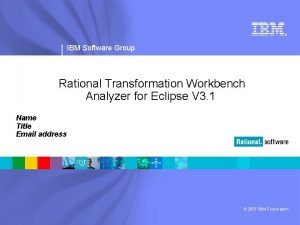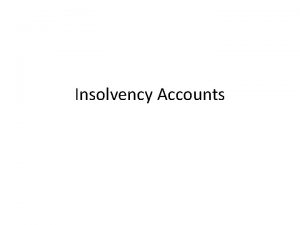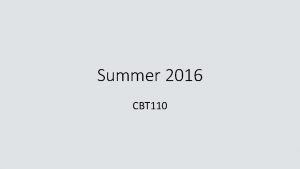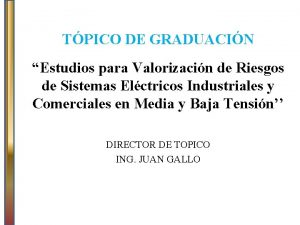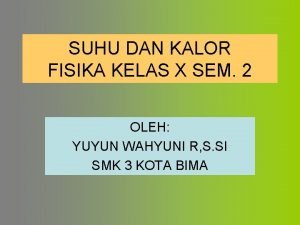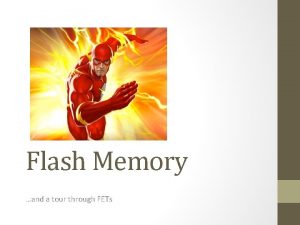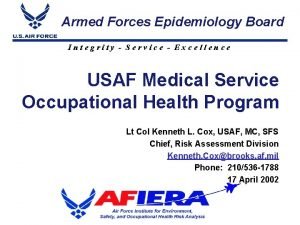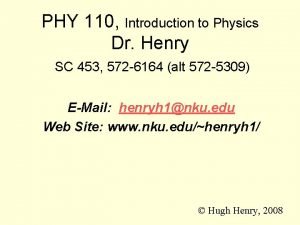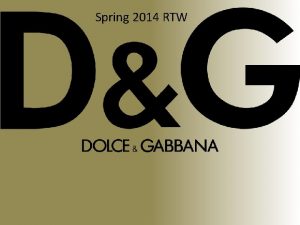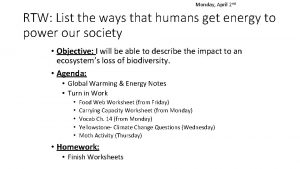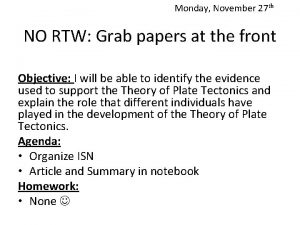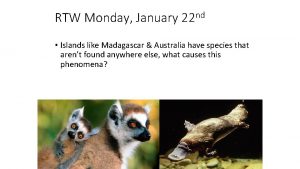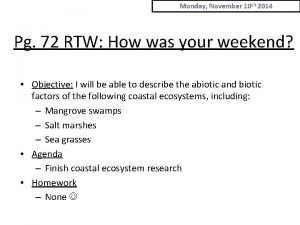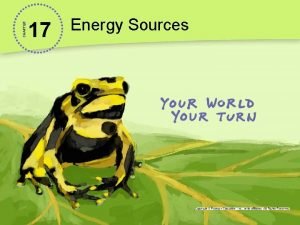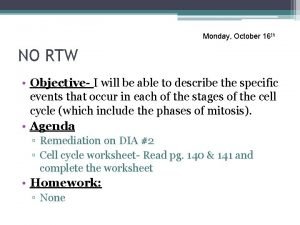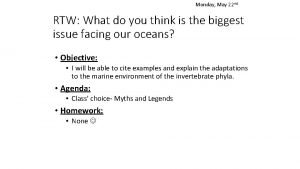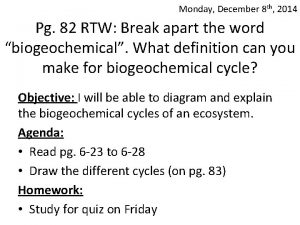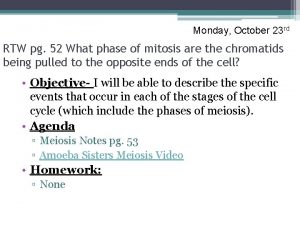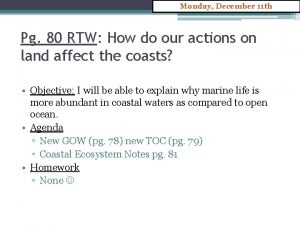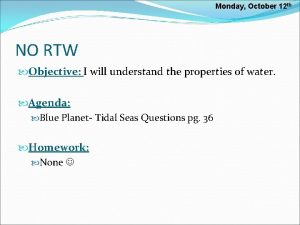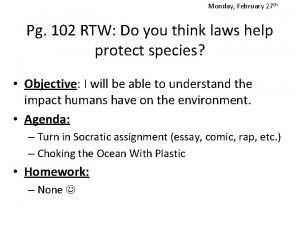Monday March 19 th Pg 110 RTW List

















- Slides: 17

Monday, March 19 th Pg. 110 RTW: List ways that we get energy • Objective: I will be able to identify and evaluate the cost and benefits of renewable and non-renewable marine resources. • Agenda: • • Vote on top 3 Human Impact Projects New GOW- pg. 108 (tomorrow) New TOC- pg. 109 (tomorrow) Marine Energy Jigsaw pg. 111 • Homework: • None

1. ) Tides/Waves 2. ) Mangroves/Kelp/Algae/Seaweed How do we get energy from this? Pros: 5. ) Fossil Fuels Cons: How do we get energy from this? 3. ) Wind How do we get energy from this? Pros: Cons: 4. ) Hydrothermal Vents How do we get energy from this? Cons: Pros: Cons:

Tuesday, March 20 th No RTW **GRAB 3 PAPERS UP FRONT** • Objective: I will be able to identify and evaluate the cost and benefits of renewable and non-renewable marine resources. • Agenda: • New GOW- pg. 108 • New TOC- pg. 109 • Oil Spill Lab pg. 113 (DON’T GLUE THIS IN YET) • Homework: • None

BP Oil Spill It is April 2010 and the Deepwater Horizon oil rig just sank. BP is looking to hire a team of scientists with the best clean up plan. Working with your partner scientist, test 8 materials at their effectiveness at cleaning up oil.

BP Oil Spill Directions 1. Working with the person sitting next to you, test 8 materials and rate them on your data sheet (First fifteen minutes). 2. Clean up your area. Clean, Keep, and Dry your: • • pan cup spoon sponge Throw Away & Restock • • • Cotton balls Q-tips Paper towel String Water goldfish 3. Wipe down your area, the supplies and set it up like it was when you came in. 4. Answer the post-questions.

RTW pg. 110 Wednesday, March 21 st Brainstorm a new type of renewable energy that we could harness (use your imagination!)

Wednesday, March 21 st • Objective: I will be able to identify and evaluate the cost and benefits of renewable and non-renewable marine resources. • Agenda: • Oil Spill Article pg. 112 • Turn in missing work: • Jigsaw • Oil Spill Lab • Homework: • None

Thursday, March 22 nd RTW pg. 110 What do you think is the best way to harvest energy? • Objective: I will be able to identify and evaluate the cost and benefits of renewable and non-renewable marine resources. . • Agenda: • Harvesting Tides video & Questions • Homework: • None

Friday, March 23 rd RTW pg. 110: Do you think America can stop using fossil fuels? • Objective: I will be able to identify and evaluate the cost and benefits of renewable and non-renewable marine resources. . • Agenda: • Grade Video Questions • NEW GOW 114 & TOC 115 • Classification Notes pg. 117 • Homework: • None

Taxonomy • = the science of naming and classifying organisms. • A taxon is a group of organisms in a classification system. Greater Blue Ringed Octopus: Hapalochlaena lunulata

Binomial nomenclature • = two-part scientific naming system. – uses Latin words – scientific names always written in italics – two parts are the genus name and species descriptor

• A genus includes one or more physically similar species • Species in the same genus are thought to be closely related. • Genus name is always capitalized. • A species descriptor is the second part of a scientific name. • always lowercase • always follows genus name; never written alone Paracanthurus hepatus

• Scientific names help scientists to communicate. • Some species have very similar common names. • Some species have many common names.

Linnaeus’ classification system • Each level is included in the level above it. • Levels get increasingly specific from kingdom to species

Linnaeus’ classification system Domain- Broadest category Kingdom- (i. e. : Animalia) Phylum- (i. e. : Chordata) Class- (i. e. : Mammalia) Order- (i. e. : Carnivora) Family- (i. e. : Canidae) Genus- (i. e. : Canis) Species- Most specific (i. e. : Canis lupus • • 5 kingdoms • Protista (the singlecelled eukaryotes) • Fungi (fungus and related organisms) • Plantae (the plants) • Animalia (the animals) • Monera (the prokaryotes)

The Linnaean classification system has limitations. • Linnaeus taxonomy doesn’t account for molecular evidence. • The technology didn’t exist during Linneaus’ time. • Linnaean system based only on physical similarities.

• Physical similarities are not always the result of close relationships. • Genetic similarities more accurately show evolutionary relationships.
 110 000 110 & 111 000 111
110 000 110 & 111 000 111 Où se trouve le numéro d'affiliation mutuelle vignette ?
Où se trouve le numéro d'affiliation mutuelle vignette ? March march dabrowski
March march dabrowski Rational software analyzer
Rational software analyzer Axiom meaning in maths
Axiom meaning in maths Fungsi linked list
Fungsi linked list Singly linked list vs doubly linked list
Singly linked list vs doubly linked list Select list item list index too large
Select list item list index too large Singly vs doubly linked list
Singly vs doubly linked list List h shows account
List h shows account Cbt110
Cbt110 Nec 110-26
Nec 110-26 Materi fisika suhu dan kalor kelas x smk
Materi fisika suhu dan kalor kelas x smk Csce 110 tamu syllabus
Csce 110 tamu syllabus Floating gate transistor animation
Floating gate transistor animation Afi 48-110
Afi 48-110 Fahrenheit 451 pages 93-110 summary
Fahrenheit 451 pages 93-110 summary Phy 110
Phy 110



